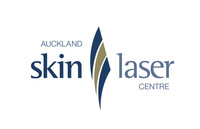Phone (09) 520 3200
Healthlink EDI: stjonsmt
Email Address mail@skinlaser.co.nz


Phone (09) 520 3200
Healthlink EDI: stjonsmt
Email Address mail@skinlaser.co.nz
What is ‘fractional’ laser?
This treatment is the new gold standard in skin resurfacing that is safe for most skin types delivering dramatic ablative clinical results with minimal discomfort:
The FRACTIONAL technology delivers tiny spots of CO2 laser light in a pixel-like fashion where microscopic tiny holes are punched into the skin right next to each other via a computer-generated pattern. A matrix of tiny treatment ‘dots’ is created with all of the skin between the dots left untreated. The effect looks something like this:
• • • • • • • •
• • • • • • • •
• • • • • • • •
• • • • • • • •
Microscopic columns of laser energy are delivered across the skin barrier, treating up to 20% of skin surface area. The other 80% of non-treated skin surface provides a source of rapid healing of the small treatment zones.
A recent study confirmed that the fractional CO2 deep dermal ablation resulted in collagen remodelling for at least three months after treatment.
Energy of Fractional CO2 Laser mushrooms in the papillary dermis » Skin Tightening » Continual Collagen Production up to 6 months.
What is the advantage of a fractional laser treatment?
Skin treated with a fractional laser heals much more quickly than skin that has been completely ‘resurfaced’ i.e. all of the top skin layer removed. Typically healing of the dots of treated skin takes four to six days and results in minimal ‘down time’ during the healing process.
Because such a small amount of the skin surface is treated, there is a much-reduced risk of side effects from treatment such as redness, pigmentation and infection.
Cosmetic appearance continues to improve with stimulation of collagen production up to 6 months after the procedure.
What is the fractional CO2 laser useful for?
This laser has proven to be very effective in treating and improving acne scars and other scars. It is also very effective in providing a gentle rejuvenating effect on skin without the longer down time of a more dramatic laser skin resurfacing procedure. The gentle nature of this laser allows more delicate skin such as the neck, chest and hands to be treated.
Is more than one treatment required?
Usually, three or more treatments are required to ‘remodel’ scarred skin. Depending on the density and depth of ‘fractional’ dots chosen for a skin rejuvenation treatment, possibly three treatments will be needed for this procedure. After three to five treatments, it is realistic to expect 50% improvement in the problem being treated.
Is fractional CO2 laser treatment painful?
Depending on the density and depth of treatment chosen, there can be moderate pain. This will typically be managed with a combination of pre–procedure oral pain relief, topical anaesthetic cream applied to the treatment site prior to the procedure and possibly an inhalational relaxing medicine (Penthrox ™) at the time of the procedure.
Following the procedure, patients may experience a mild ‘sunburn-like’ sensation on the treated skin, for several hours. There may be pinpoint bleeding from the treatment sites. These problems are easily managed with Vaseline dressings and pressure.
Will my skin be bandaged after the procedure?
There is no need for dressings after the procedure. A Vaseline ointment will be applied immediately after the procedure and should be regularly applied after the procedure as this speeds up healing time.
What is the healing process like?
The healing time varies according to the depth and density of the treatment ‘dots’ in the skin. For deeper problems such as acne scarring, the healing may well take four to six days but with more shallow treatments, three to five days of healing is likely. However, individual patient healing times vary.
Initially the treatment site will feel hot, like sunburn. This will quickly settle and patients are asked to keep the area moist with Vaseline or other recommended ointments. The pinpoint treatment sites will form crusts, which will flake off after a few days. The treatment sites will initially be pink as they heal and this colour will fade over a short period of time. It can be readily covered with makeup, once healed. Patients are asked to avoid sun exposure or use a good sunscreen during this healing phase.
What possible unwanted side effects can occur?
With deeper treatments the healing can be prolonged, with oozing, swelling and crusting.
There is a small risk of skin infection which can be countered by taking medication. Individuals who regularly suffer from herpes cold sores should take preventative medication to prevent an outbreak during healing.
Rarely, the redness of the healing skin can be prolonged and in individuals who tan more readily or have an olive or darker complexion, there is a risk of the healing skin darkening. This side-effect can be treated with special ‘fading’ creams. Very rarely, this skin may heal a lighter colour. Thick scarring of the treatment sites is very rare with fractional laser treatment.
https://www.healthpoint.co.nz/private/dermatology/dr-paul-le-grice-auckland-skin-laser-centre/